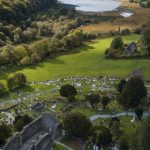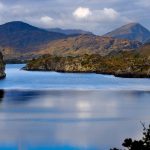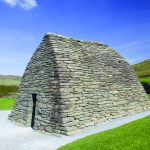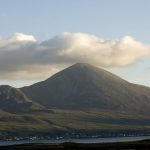Introduction
 Visit Dublin’s iconic sites, St. Patrick’s Cathedral, Christ Church Cathedral, Trinity College which houses the famous Book of Kells to mention a few.
Visit Dublin’s iconic sites, St. Patrick’s Cathedral, Christ Church Cathedral, Trinity College which houses the famous Book of Kells to mention a few.
Travel to the historic Boyne Valley and see the High Crosses at Monasterboice, visit Newgrange, a passage tomb older than the Pyramids of Egypt.
Wander through County Wicklow’s magical Glendalough and the 7th century monastic settlement.
Visit the amazing Rock of Cashel, a famous ecclesiastical center with its ties to the early Kings of Munster and Ireland’s patron saint, Saint Patrick.
Wander through the ancient ruins of Innisfallen Abbey, situated on a remote island surrounded by the stunning Lakes of Killarney.
Enjoy some free time in the bustling town of Killarney and have the opportunity to visit one of its most famous landmarks St. Mary’s Cathedral used as a place of shelter during the great famine.
Visit the early Christian sites along the Dingle Pennisula and the ruined church at Kilmalkedar with its many monuments dating back to both early Christian and medieval times such as the ogham stone, alphabet stone, stone cross and a beautiful sun-dial.
Explore the scenic west coast of Ireland and its many hidden gems such as the ruins of Kilfenora Cathedral with its High Crosses and the Poulnabrone Dolmen. Journey through the rugged landscape of Connemara and travel by the foothills of the one of Ireland’s most famous pilgrimage sites Croagh Patrick.
Visit the internationally recognized Marian Shrine at Knock which welcomes over one and a half a million pilgrims every year.
Itinerary
Day 1. Arrive Dublin – Dublin City Tour
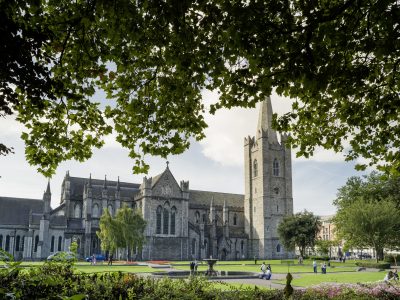 Following early morning arrival at Dublin Airport, we begin with a tour of Ireland’s capital city Dublin, situated on the banks of the River Liffey. We will see The Georgian Squares with their 18th Century houses, the Phoenix Park (biggest town park in Europe), statue filled O’Connell Street and the fashionable Grafton Street.
Following early morning arrival at Dublin Airport, we begin with a tour of Ireland’s capital city Dublin, situated on the banks of the River Liffey. We will see The Georgian Squares with their 18th Century houses, the Phoenix Park (biggest town park in Europe), statue filled O’Connell Street and the fashionable Grafton Street.
We will also visit St. Patrick’s Cathedral which stands adjacent to a well where Saint Patrick baptized people into Christianity in as early as 450. The present building dates from 1220 and is the National Cathedral for the Church of Ireland.
Our next stop will be Trinity College where we visit the Old Library to view a 9th century Latin manuscript of the four Gospels, written on vellum (prepared calfskin), known as the Book of Kells.
This afternoon we check into our hotel for a well earned rest.
Overnight: Dublin.
Day 2. Boyne Valley
 This morning we travel to the Boyne Valley, one of the most historic parts of Ireland. Our first visit this morning is at Monasterboice. The monastery was founded here by Saint Buite in the 5th century and contains two of the finest High Crosses in Ireland, both of which date back to the 9th century.
This morning we travel to the Boyne Valley, one of the most historic parts of Ireland. Our first visit this morning is at Monasterboice. The monastery was founded here by Saint Buite in the 5th century and contains two of the finest High Crosses in Ireland, both of which date back to the 9th century.
Our next stop is Mellifont Abbey founded in 1142 and was the first Cistercian house in Ireland.
We continue to Newgrange, a passage tomb dating back to about 3200 BC making it older than the Great Pyramids of Egypt. Newgrange is also a recognized place of astrological, spiritual, religious and ceremonial importance.
We will stop in Drogheda, where we will have some free time for lunch and also an opportunity to visit St Peter’s Church which preserves the relics of Blessed Oliver Plunkett. From here, we return to Dublin.
Overnight: Dublin.
Day 3. Glendalough – Church of St. Canice
 This morning we depart Dublin and travel south to County Wicklow known as “The Garden of Ireland”. Our first stop is Glendalough (Valley of Two Lakes) where we go back in time to the 7th century with a guided tour of this remarkable early monastic settlement.
This morning we depart Dublin and travel south to County Wicklow known as “The Garden of Ireland”. Our first stop is Glendalough (Valley of Two Lakes) where we go back in time to the 7th century with a guided tour of this remarkable early monastic settlement.
From here, we continue over the Wicklow Gap to Holywood and from here to Kilkenny City on the banks of the river Nore. This afternoon we visit the cathedral of Saint Canice. The 13th century cathedral is the second longest cathedral in Ireland and has been a site of Christian worship since the 6th century.
Overnight: Kilkenny.
Day 4. Holy Cross Abbey – Rock of Cashel
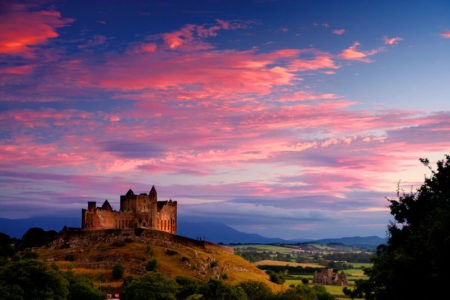 This morning we depart Kilkenny and travel to the historic Holy Cross Abbey founded in 1180 by the King of Munster Donal O’Brien as a shrine for a relic of the true cross given to his father by Pope Paschal 11. The abbey was transferred to the Cistercians about 1182. A particle of the true cross was enshrined in the abbey and Holy Cross became one of the most frequented places of pilgrimage in Ireland.
This morning we depart Kilkenny and travel to the historic Holy Cross Abbey founded in 1180 by the King of Munster Donal O’Brien as a shrine for a relic of the true cross given to his father by Pope Paschal 11. The abbey was transferred to the Cistercians about 1182. A particle of the true cross was enshrined in the abbey and Holy Cross became one of the most frequented places of pilgrimage in Ireland.
We continue to Cashel where we will have a guided tour of the amazing Rock of Cashel. This was the seat of the Kings of Munster from 370 – 1101 and has early associations with St. Patrick. The group of medieval buildings includes a 12th century Round Tower, a 13th century Gothic Cathedral, a 15th century High Cross and Romanesque Chapel. From here, we continue through the beautiful Golden Vale and the rolling hills of County Cork to Killarney.
Overnight: Killarney.
Day 5. Innisfallen Abbey – St Mary’s Cathedral
 This morning we take a short boat trip on the picturesque Lakes of Killarney from Ross Castle to the Island of Innisfallen. Here we will see the ruins of Innisfallen Abbey, founded around the year 600 by Saint Faithlean, (fallen) the leper. The abbey is famous for The Annals of Innisfallen, a chronicle of world and Irish history in Irish and Latin compiled on the island and now housed in the Bodleian Library in Oxford. The island became a great centre of learning and in the 10C King Brian Boru was educated here.
This morning we take a short boat trip on the picturesque Lakes of Killarney from Ross Castle to the Island of Innisfallen. Here we will see the ruins of Innisfallen Abbey, founded around the year 600 by Saint Faithlean, (fallen) the leper. The abbey is famous for The Annals of Innisfallen, a chronicle of world and Irish history in Irish and Latin compiled on the island and now housed in the Bodleian Library in Oxford. The island became a great centre of learning and in the 10C King Brian Boru was educated here.
On returning to the mainland, we travel on a traditional Irish jaunting car through the Killarney National Park to St. Mary’s Cathedral. Construction of the Cathedral commenced in 1842 but was suspended for 5 years during the Great Famine when the partially roofed section was used as a place of shelter. A single tree on the grounds of the cathedral marks a famine grave. The remainder of the afternoon is free to check out some of the many shops, pubs and restaurants in the picturesque town of Killarney.
Overnight: Killarney.
Day 6. Dingle Peninsula – Ennis
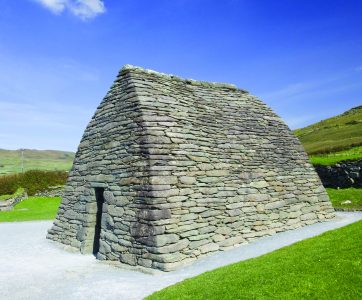 Today we will enjoy the unspoiled beauty of The Dingle Peninsula, once cited as ‘the most beautiful place on earth’ by the National Geographic. We will travel back in time as we see some beehive huts (early monastic settlements) dating back over a thousand years and the 8c Gallarus Oratory. Our tour takes us to the most westerly point of Ireland with spectacular views of the coastline and the Blasket Islands.
Today we will enjoy the unspoiled beauty of The Dingle Peninsula, once cited as ‘the most beautiful place on earth’ by the National Geographic. We will travel back in time as we see some beehive huts (early monastic settlements) dating back over a thousand years and the 8c Gallarus Oratory. Our tour takes us to the most westerly point of Ireland with spectacular views of the coastline and the Blasket Islands.
We will also visit the ruined church at Kilmalkedar with its many monuments dating back to both early Christian and medieval times. We will see an ogham stone, alphabet stone, stone cross and a beautiful sun-dial. The Romanesque church is the focal feature of the complex with one of the finest doorways in that style in Ireland.
We also see some of the locations for such films as Ryan’s Daughter, Far and Away starring Tom Cruise and Nicole Kidman and the more recently filmed Star Wars The Last Jedi. We will have some free time in Dingle town before continuing to Ennis.
Overnight: Ennis.
Day 7. Cliffs of Moher – The Burren – Kilfenora Cathedral – Poulnabrone Dolmen
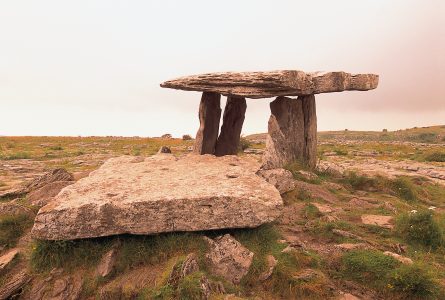 This morning we travel to Lahinch and continue the coast road to St. Brigid’s holy well. From here we travel to the majestic Cliffs of Moher which rise to a height of 600 ft over the Atlantic Ocean.
This morning we travel to Lahinch and continue the coast road to St. Brigid’s holy well. From here we travel to the majestic Cliffs of Moher which rise to a height of 600 ft over the Atlantic Ocean.
Our tour continues through the lunar type landscape of the Burren. This unique part of Ireland is made up of 100 square miles of limestone rock. We will visit the ruins of Kilfenora Cathedral and its high crosses. The cathedral in Kilfenora was built in the 12c and dedicated to St. Fachtna who founded his monastery here during the sixth century.
Our next visit is to the Poulnabrone Dolmen. A Dolmen is a megalithic tomb formed by three or more upright stones covered by a cap stone. The Poulnabrone Dolmen dates back to 2500 BC. It was excavated in 1968 and found to contain the remains of between 16 and 22 adults and 6 juveniles including a newborn baby. From here we continue the coast road to Galway City.
Overnight: Galway.
Day 8. Connemara – Westport
 This morning we depart Galway and travel through Connemara, which is made up of mountains, lakelands and boglands. Because of its wild and rugged beauty it has been the location for many films. “The Quiet Man” with John Wayne and Maureen O’Hara and in more recent times “The Field” starring Richard Harris to name but two.
This morning we depart Galway and travel through Connemara, which is made up of mountains, lakelands and boglands. Because of its wild and rugged beauty it has been the location for many films. “The Quiet Man” with John Wayne and Maureen O’Hara and in more recent times “The Field” starring Richard Harris to name but two.
We continue to Doolough and travel a stretch of road known as the Famine Walk. Hundreds of people take part in the walk every year during the month of May following in the footsteps of the many people who left their home in search of food during the Great Famine.
We travel by the foothills of Croagh Patrick, Ireland’s holy mountain. Throughout the year people climb Croagh Patrick also known as the Reek. On Reek Sunday, the last Sunday in July, over 25,000 pilgrims climb the Reek, some barefoot as an act of penance.
Overnight: Westport.
Day 9. Ballintubber Abbey – Knock Shrine – Bunratty
 This morning we visit Ballintubber Abbey, known as the abbey that refused to die. The abbey was founded in 1216 and mass has been celebrated in the abbey daily ever since. For 236 years, people have attended Mass in the unroofed abbey exposed to the cold, wind and the rain.
This morning we visit Ballintubber Abbey, known as the abbey that refused to die. The abbey was founded in 1216 and mass has been celebrated in the abbey daily ever since. For 236 years, people have attended Mass in the unroofed abbey exposed to the cold, wind and the rain.
From here we travel to Knock. It was here on the 21st August 1879, Our Lady, St. Joseph and St. John the Evangelist appeared to 15 people ranging in age from 12 to 75. Knock is now an internationally recognized Marian Shrine. Pope John Paul II visited in 1979, commemorating the centenary of the apparition and Mother Teresa of Calcutta visited the shrine in June 1993. One and a half million pilgrims visit the shrine annually. From here, we continue to Bunratty.
Overnight: Bunratty.
Day 10. Bunratty – Shannon Airport
Today we sadly bid farewell to the Emerald Isle. We will travel to Shannon Airport for our return journey home.
Get in touch today



